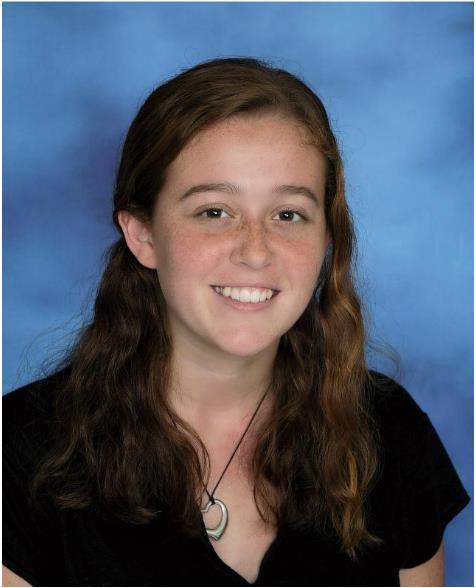Sexual assault has dominated the news recently, as numerous prominent entertainers and politicians have been accused of assault or harassment. But it has been an issue on college campuses for years, where almost a quarter of female undergraduates said they experienced rape or sexual assault.
That statistic caught the eye of Caitlin Maley. The senior at Paul D. Schreiber High School decided to conduct an experiment on racial biases in victim blaming in sexual assault cases on college campuses. For her report, Maley was named a Regeneron Science Talent Search scholar.
“I chose this topic because at my school we have a criminal law class and we talked about how people blame the victim more in rape cases than any other crime,” she said. “I wanted to see why people viewed this differently than others crimes.”
Namely the difference between rape and robbery: she wrote that college women are twice as likely to be the victim of sexual assault as robbery, but victims of robbery were rarely blamed. That difference is what drew her to the topic.
In her report, Maley wrote that victims have been blamed “for many reasons, including age, clothing, and level of intoxication.” She said race had never been examined as a reason for victim blaming and that was why she wanted to study it.
Her hypothesis was that participants would be more likely to blame victims of a minority race than those of Caucasian descent. She gathered a group of 57 college-age people— ranging from incoming freshman to 2015 graduates— chosen randomly from around Long Island. About 60 percent were female and 86 percent were Caucasian.
The participants received a packet containing two different scenarios. In the first, a woman waited to report a sexual assault. In the second, a woman accuses her boyfriend of assault even though they had sex before.
Some participants received a packet that used white-sounding names (Sara) for the first scenario while the others received a packet with an African-American-sounding name (Ebony). For the second scenario, some received a packet with traditionally white names and some with Hispanic names.
Maley found that participants were less sympathetic to the women with minority-sounding names than with traditionally white names. Though she had predicted this would be the case, she was still somewhat surprised by the results.
“Yes, I had prophesied that it would happen,” she said. “But I was surprised living in a liberal area of New York State, I got participants from a liberal area and was surprised that people responded that way.”
She concluded by saying she would like to conduct the experiment in the future with a larger number of participants who were more diverse.
Maley was one of 300 students from across the country selected as a scholar out of 1,800 applicants. Each winner receives $2,000, as do their respective schools for their science programs.
“I was in my government class when my friends texted me saying I won,” she said. “I was so happy, I couldn’t even write down my notes my hands were shaking so much.”
She also received a message of congratulations from the school district’s Board of Education and superintendent.
“To be one of just 300 students in the country recognized in this search is a tremendous honor and a testament to Caitlin’s dedication, keen knowledge, and analysis of her work,” Superintendent Kathleen Mooney said. “On behalf of the Board of Education and administration, I congratulate Caitlin for her thoughtful and timely, relevant study and commend her teachers and family for their unwavering support. We wish her well on the rest of her journey in the competition.”
On Jan. 23, the list of 300 scholars will be whittled down to 40 finalists, who will take part in a competition in March in Washington, D.C.



